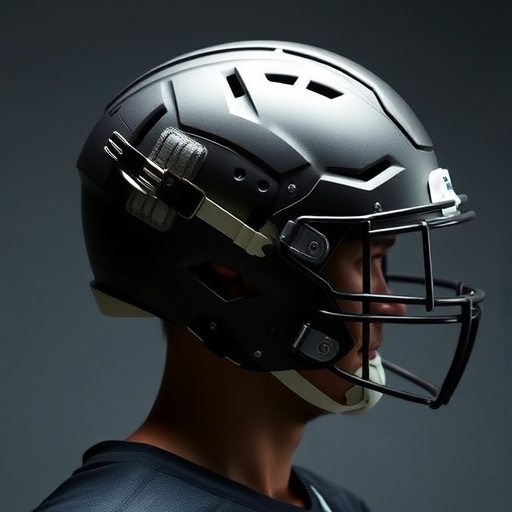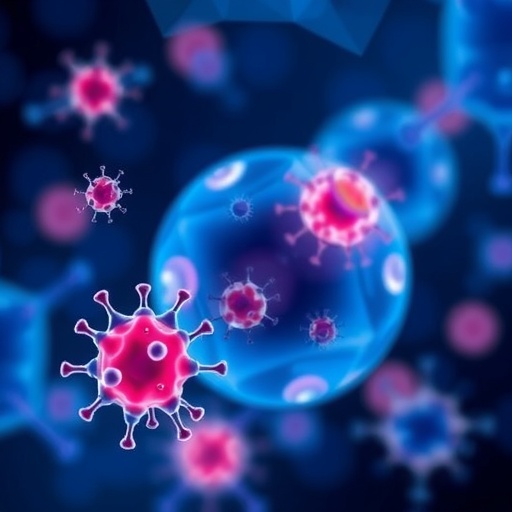
In the realm of neurorehabilitation, post-concussion syndrome (PCS) continues to challenge clinicians due to its multifaceted and heterogeneous symptomatology. A recent study published in BioMedical Engineering OnLine sheds light on the need for a tailored approach in assessing and managing this perplexing condition. Researchers Moser, Popovic, and Kalsi-Ryan propose a customized rehabilitation framework fashioned from subgroup determination via a meticulous, standardized clinical examination. Their findings not only illuminate the complexity of PCS but advocate for a shift away from generic treatment paradigms toward individualized rehabilitation strategies.
Post-concussion syndrome manifests as a constellation of symptoms that span physical, cognitive, and emotional domains, rendering clinical management notoriously difficult. Traditional approaches often fall short, as symptom presentations vary significantly from one patient to another. The research undertook a rigorous examination of 16 adult participants diagnosed with PCS, each undergoing a 6-week rehabilitation program meticulously crafted according to their identified symptom subgroup. This patient-centric methodology stands in contrast to conventional “one-size-fits-all” protocols, accentuating the necessity to decode the distinct pathophysiological drivers underpinning each individual’s symptom profile.
The cornerstone of this investigative effort lies in the development and application of a comprehensive standardized clinical exam designed to categorize patients into one of three primary subgroups: autonomic dysfunction, cervical spine-related pathology, and vestibulo-ocular disturbances. This nuanced classification enables clinicians to direct rehabilitation efforts precisely at the ostensible symptom generators, a factor hypothesized to enhance therapeutic efficacy. Such stratification leverages an advanced understanding of neurophysiological and musculoskeletal mechanisms altered post-concussion, paving the way for more targeted interventions.
Assessment metrics play a pivotal role in quantifying the efficacy of the customized rehabilitation program. The primary outcome measure employed was the Rivermead Post-Concussion Questionnaire (RPQ), a validated patient-reported tool that captures the breadth of PCS symptoms. Secondary measures, including the Patient Health Questionnaire-9 (PHQ-9) for depression screening, the Neck Disability Index (NDI), and the Buffalo Concussion Treadmill Test (BCTT) for exercise tolerance, provided a multidimensional evaluation of patient progress. The integration of these varied instruments underscores a holistic approach, capturing physical, cognitive, and emotional domains of recovery.
After completion of the 6-week intervention, the study reported statistically significant and clinically meaningful improvements in both RPQ-3 and RPQ-13 scores, highlighting reduction in core and extended symptom clusters associated with PCS. Improvements in secondary outcomes were equally compelling, with PHQ-9 scores indicating reduced depressive symptoms, while NDI scores reflected diminished neck-related disability. Moreover, enhanced exercise tolerance, as measured via heart rate threshold in the BCTT, signified better autonomic and cardiovascular regulation—key factors often disrupted after concussive injuries.
This study’s insights reverberate beyond simple symptomatic relief. They suggest that the pathogenesis of PCS is likely multifactorial and individualized, necessitating precise identification of underlying dysfunctions to tailor rehabilitation effectively. The autonomous, cervical, and vestibulo-ocular axes represent distinct yet occasionally overlapping mechanistic domains that can contribute to symptoms; thus, isolating the dominant contributors facilitates focused therapy rather than the administration of broad-spectrum rehabilitation.
The feasibility and utility of such a standardized exam were also demonstrated, reinforcing its potential for clinical adoption. By stratifying patients, clinicians can now prescribe treatments that harness neuroplasticity principles more effectively—be it cervical mobilization, vestibular therapy, or autonomic regulation exercises—each targeting a specific neurological substrate. This stratification promises to quell the often-frustrating trial-and-error process traditionally endured by both clinicians and patients alike.
Critically, this tailored model challenges current rehabilitative dogma, which tends to lump post-concussion symptoms into one homogenous group. As this research underlines, a failure to appreciate the heterogeneity in PCS presentations may lead to suboptimal outcomes, prolonged disability, and increased healthcare burden. The shift towards custom rehabilitation grounded in precise, symptom-driven subgrouping could revolutionize post-concussion care by improving patient outcomes and optimizing resource utilization.
Furthermore, the methodology embraces the integration of objective physiological testing—such as the Buffalo Concussion Treadmill Test—to complement subjective reports, bringing rigor and reproducibility to PCS management. Exercise intolerance is a hallmark of autonomic dysfunction post-concussion, and its quantification pre- and post-intervention offers tangible evidence of treatment effectiveness.
The implications of this work extend to the design of future clinical protocols and rehabilitation tools. The authors’ approach could inform interdisciplinary frameworks where neurologists, physiotherapists, psychologists, and other professionals collaborate around a precise clinical taxonomy, ensuring that treatment modalities are cohesive and aligned with patient-specific deficits.
In conclusion, the study by Moser and colleagues substantiates a compelling argument for customized rehabilitation in PCS, affirming that comprehensive clinical subgrouping can drive meaningful improvements in symptoms, function, and quality of life. This patient-centered model not only tackles the clinical complexity inherent to PCS but also champions a paradigm shift towards precision rehabilitation. For clinicians confronting the challenge of post-concussion recovery, this research heralds a progressive blueprint, offering strategic direction grounded in robust evidence and clinical pragmatism.
As multidisciplinary teams continue to grapple with the elusive nature of post-concussion syndrome, this tailored rehabilitation framework could foster better patient adherence, reduced symptom chronicity, and ultimately, diminished societal impact from concussion-related disabilities. The integration of standardized examinations paired with custom interventions marks a significant step forward in translating concussion neuroscience into clinical practice.
The promise of personalized rehabilitation in PCS is now not only theoretical but empirically supported, inviting further exploration and validation in larger, diverse cohorts. Future directions may exploit emerging technologies, such as digital health monitoring and tele-rehabilitation, to extend this customized approach beyond traditional clinical settings, enhancing access and continuity of care for individuals battling persistent concussion symptoms worldwide.
Subject of Research: Customized rehabilitation for adults with post-concussion syndrome based on subgroup stratification via standardized clinical examination.
Article Title: Complexity of post-concussion syndrome assessment and management: a case for customizing rehabilitation
Article References:
Moser, N., Popovic, M.R. & Kalsi-Ryan, S. Complexity of post-concussion syndrome assessment and management: a case for customizing rehabilitation. BioMed Eng OnLine 24, 48 (2025). https://doi.org/10.1186/s12938-025-01380-x
Image Credits: AI Generated
DOI: https://doi.org/10.1186/s12938-025-01380-x
Tags: challenges of post-concussion syndromecustomized rehabilitation for post-concussion syndromeindividualized treatment approaches for concussionsinnovative research in concussion treatmentmultifaceted symptoms of PCSneurorehabilitation strategies for PCSpathophysiological drivers of PCS symptomspatient-centric rehabilitation frameworksstandardized clinical examination for PCSsubgroup determination in concussion managementtailored rehabilitation programs for concussion recovery





